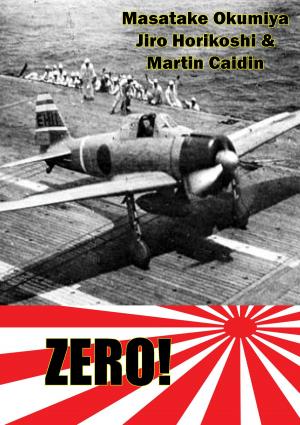JAPANESE IN BATTLE 1st Edition [Illustrated Edition]
Nonfiction, History, Germany, European General, Military, United States| Author: | Military Intelligence Staff GHQ India | ISBN: | 9781782896180 |
| Publisher: | Verdun Press | Publication: | August 15, 2014 |
| Imprint: | Verdun Press | Language: | English |
| Author: | Military Intelligence Staff GHQ India |
| ISBN: | 9781782896180 |
| Publisher: | Verdun Press |
| Publication: | August 15, 2014 |
| Imprint: | Verdun Press |
| Language: | English |
Illustrated with more than 20 maps plans and photos.
When this handbook was written in 1943 the Japanese soldier was seen by British Empire troops as a jungle fighting superman, who had largely blitzed and defeated them at every turn. As part of an effort to dispel this myth the Intelligence Section of General Headquarters in India set about distilling the tactics that the Japanese had used and to formulate counter-measures. As the staff point out in their introduction;
“The Japanese are an island race who have mastered the art of war, not through any mysterious or indefinable quality inherited from their Emperor, their islands, or their ancestors during your grandfather’s time they were still in the bow-and-arrow stage-but through serious study of ancient and modern methods, and by intensive training. If we analyse their tactics, reducing them to fundamentals, all that they practise is to be found in our own training manuals, or in the military histories of ancient campaigns; not even the snipers in the trees are new-the jungle tribes of Africa and Brazil have employed them since time immemorial.
“In their long history the peoples of our Empire have shown the world that they possess more than an average share of courage and tenacity, and today we must add to these advantages our undoubted superiority in arms and equipment. Any success which the Japanese have had against us was due to intensive training, carefully rehearsed plans and normal guts. Whatever the task in hand-be it the digging of a single fox-hole or the preparation of a large-scale invasion-their work is done with meticulous care, and by intensive and sustained training alone can we hope to outmanoeuvre them.”
As close to a handbook in English of how the Japanese fought and won their battles in the jungles of Southeast Asia at the beginning of the Second World War: A fascinating read.
Illustrated with more than 20 maps plans and photos.
When this handbook was written in 1943 the Japanese soldier was seen by British Empire troops as a jungle fighting superman, who had largely blitzed and defeated them at every turn. As part of an effort to dispel this myth the Intelligence Section of General Headquarters in India set about distilling the tactics that the Japanese had used and to formulate counter-measures. As the staff point out in their introduction;
“The Japanese are an island race who have mastered the art of war, not through any mysterious or indefinable quality inherited from their Emperor, their islands, or their ancestors during your grandfather’s time they were still in the bow-and-arrow stage-but through serious study of ancient and modern methods, and by intensive training. If we analyse their tactics, reducing them to fundamentals, all that they practise is to be found in our own training manuals, or in the military histories of ancient campaigns; not even the snipers in the trees are new-the jungle tribes of Africa and Brazil have employed them since time immemorial.
“In their long history the peoples of our Empire have shown the world that they possess more than an average share of courage and tenacity, and today we must add to these advantages our undoubted superiority in arms and equipment. Any success which the Japanese have had against us was due to intensive training, carefully rehearsed plans and normal guts. Whatever the task in hand-be it the digging of a single fox-hole or the preparation of a large-scale invasion-their work is done with meticulous care, and by intensive and sustained training alone can we hope to outmanoeuvre them.”
As close to a handbook in English of how the Japanese fought and won their battles in the jungles of Southeast Asia at the beginning of the Second World War: A fascinating read.
![Cover of the book JAPANESE IN BATTLE 1st Edition [Illustrated Edition] by Military Intelligence Staff GHQ India, Verdun Press](https://www.kuoky.com/images/2014/august/500x500/9781782896180-id7m_500x.jpg)

![Cover of the book German Northern Theater of Operations 1940-1945 [Illustrated Edition] by Military Intelligence Staff GHQ India](https://www.kuoky.com/images/2015/november/300x300/9781782899778-wjod_300x.jpg)
![Cover of the book Marines In World War II - Marines At Midway [Illustrated Edition] by Military Intelligence Staff GHQ India](https://www.kuoky.com/images/2014/august/300x300/9781782892762-fLx0_300x.jpg)



![Cover of the book NEW ZEALANDERS AT GALLIPOLI [Illustrated Edition] by Military Intelligence Staff GHQ India](https://www.kuoky.com/images/2014/june/300x300/9781782892458-jd5I_300x.jpg)


![Cover of the book Angels Of Armageddon: The Royal Air Force In The Battle Of Megiddo [Illustrated Edition] by Military Intelligence Staff GHQ India](https://www.kuoky.com/images/2014/august/300x300/9781782894414-HKrg_300x.jpg)
![Cover of the book Merrill’s Marauders February - May 1944 [Illustrated Edition] by Military Intelligence Staff GHQ India](https://www.kuoky.com/images/2014/august/300x300/9781782894506-MdWV_300x.jpg)


![Cover of the book Staff Ride Handbook For The Attack On Pearl Harbor, 7 December 1941 : A Study Of Defending America [Illustrated Edition] by Military Intelligence Staff GHQ India](https://www.kuoky.com/images/2014/august/300x300/9781782894513-K1Ik_300x.jpg)
